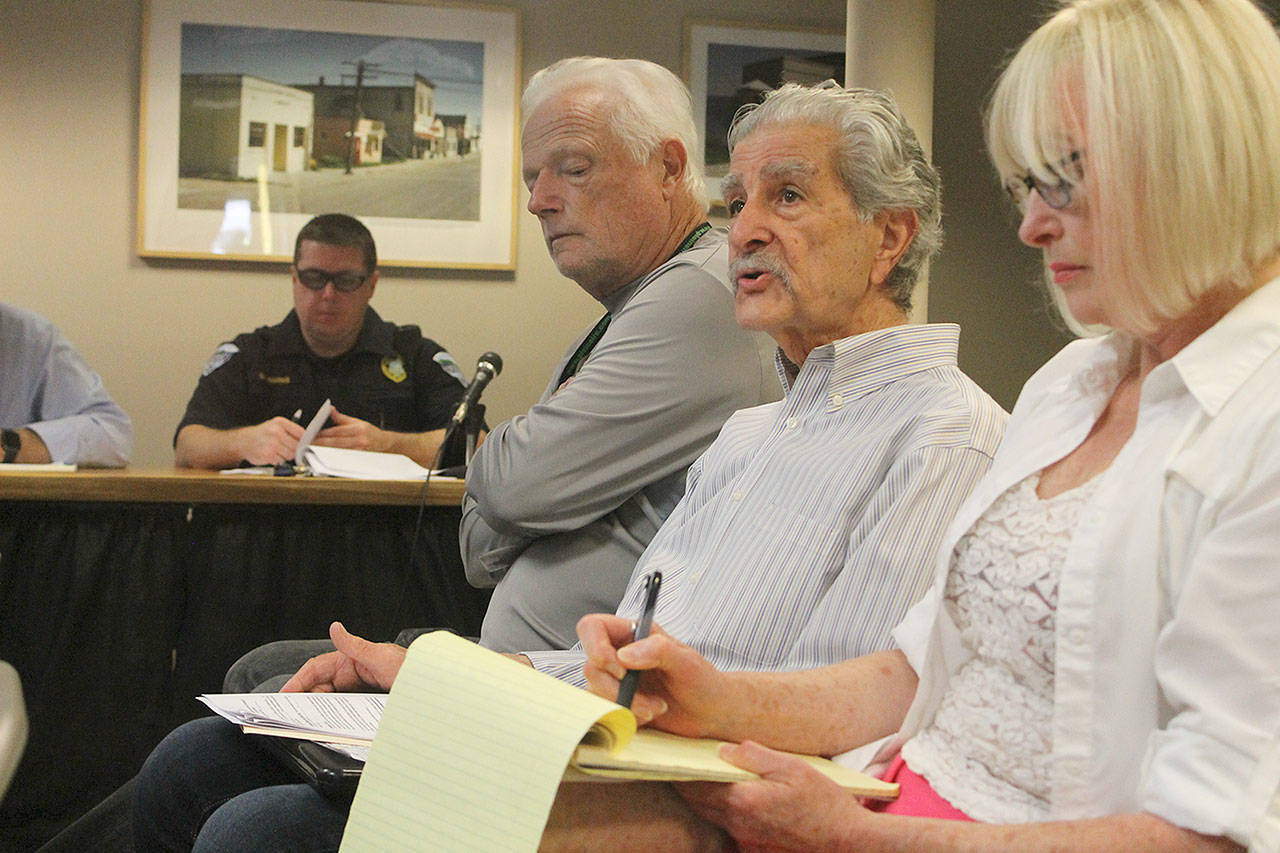The Langley City Council voted to insure artist Dale Reiger’s sculpture in Clyde Alley for up to $7,000 in damages at a workshop on Tuesday.
The good news is that it won’t cost taxpayers any money. The city’s insurance provider, Association of Washington Cities (AWC), is providing coverage as a “one-time courtesy” as part of coverage the city has already paid for, Mayor Tim Callison said.
An error in a request for proposal (RFP) document for an outdoor sculpture competition stated that temporary art is insured by the city, when in fact it is not; city-owned artwork such as Georgia Gerber’s Boy and Dog Park sculpture are covered by the AWC, but not temporary art.
Langley Arts Commission Chairman Frank Rose said confusion with what the city does and doesn’t insure, and the error in the request for proposal document led Reiger to withdraw from the program. Members of the arts commission proposed the city insure the temporary art at a city council meeting on Aug. 7. The council agreed to consider the proposal at a workshop meeting the following week.
The council’s nod of approval for insuring Reiger’s artwork on Tuesday is considered an “exception” to its policy and consignment art contract, which states the city does not insure art it does not own.
Reiger’s sculpture is one of two pieces that were installed in Clyde Alley on Saturday. Both are part of the Langley Arts Commission’s temporary art program, which allows artists to display their works free of charge in different locations around the city. If the artwork sells, the city gets 20 percent of the proceeds. Calls to artists for new art are made if after 18 months the piece does not sell.
The other sculpture crafted by Lin McJunkin and Milo White was placed on Pam Schell’s private property. Schell is providing insurance for the sculpture, Callison said.
The council opted not to make a decision on extending insurance to all artists in the future until more information could be gathered, such as what insurance rates the AWC could provide. Taxpayers would foot the bill for insuring art only if the council decides to cover consigned art, Callison wrote in an email Wednesday. It would be a separate cost that would need to be paid for out of the general fund. The insurance cost, however, could be recovered if the art is sold while on display.
“There is no certainty that a piece will be sold while on consignment,” Callison
The AWC recommended the city not insure temporary art because it does not own it, Callison said. Callison agreed with the AWC’s decision, but said the city is examining other municipalities and contracts to gather more information. He also added that because public and consigned art are becoming more and more popular in cities, there may be an insurance pool available in the future for municipalities to cover consigned artwork.
Councilman Burt Beusch said the topic requires more study and dialogue before the council can make an informed decision.
“I think it’s something that we probably need to consider, but we do know that some cities don’t provide coverage,” Beusch said. “We know that others do, but some of those only cover up to 50 percent.”
Cities that insure public art in some form or another include Anacortes, La Conner and Puyallup.
Councilwoman Dominique Emerson thought it would be imprudent for the city to insure art in the future and would be consistent with current contract language, which says artists are responsible for covering pieces individually.
Councilman Bruce Allen was concerned that other artists might also plead their case to be insured, but Mayor Tim Callison said their contracts “read clearly that they’re responsible for the insurance.”
Piggybacking on Allen’s sentiment, Beusch said the city is trying to fix a mistake and added that it should remain clear to artists the city does not currently insure art it does not own.
Rose said in a follow-up interview on Wednesday that he was pleased with the outcome after expecting some council members to be against the city providing insurance for temporary art.



